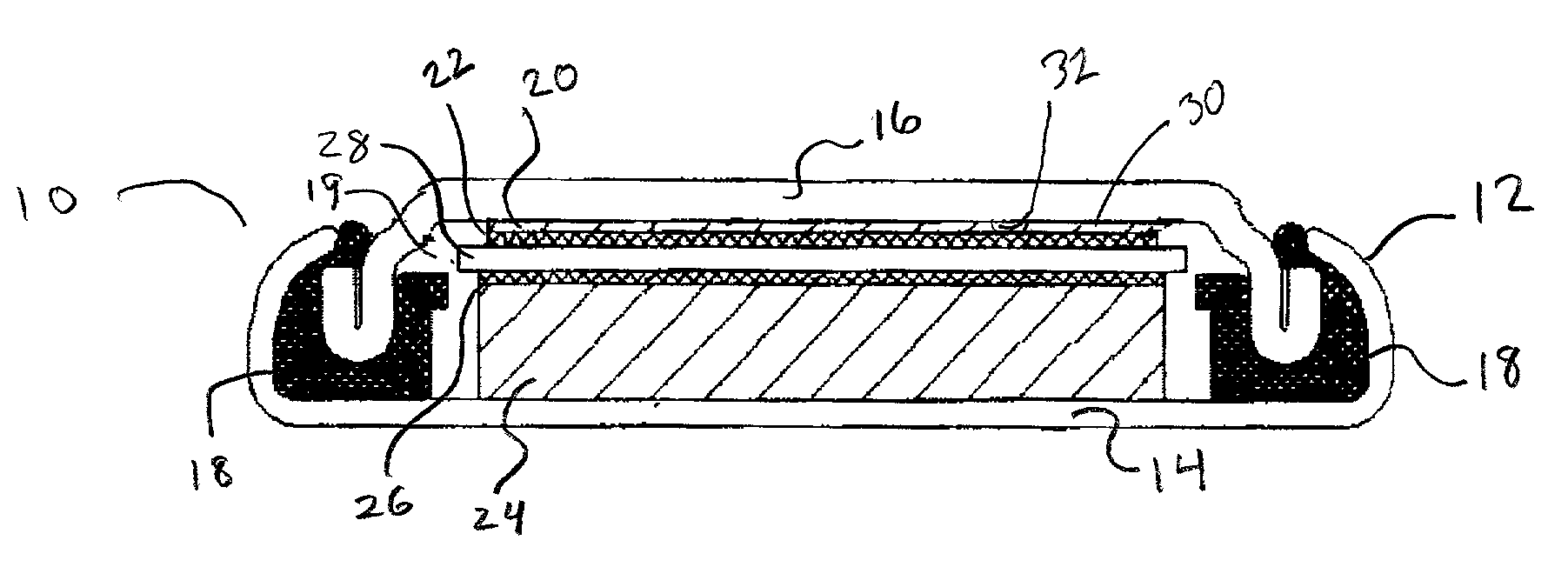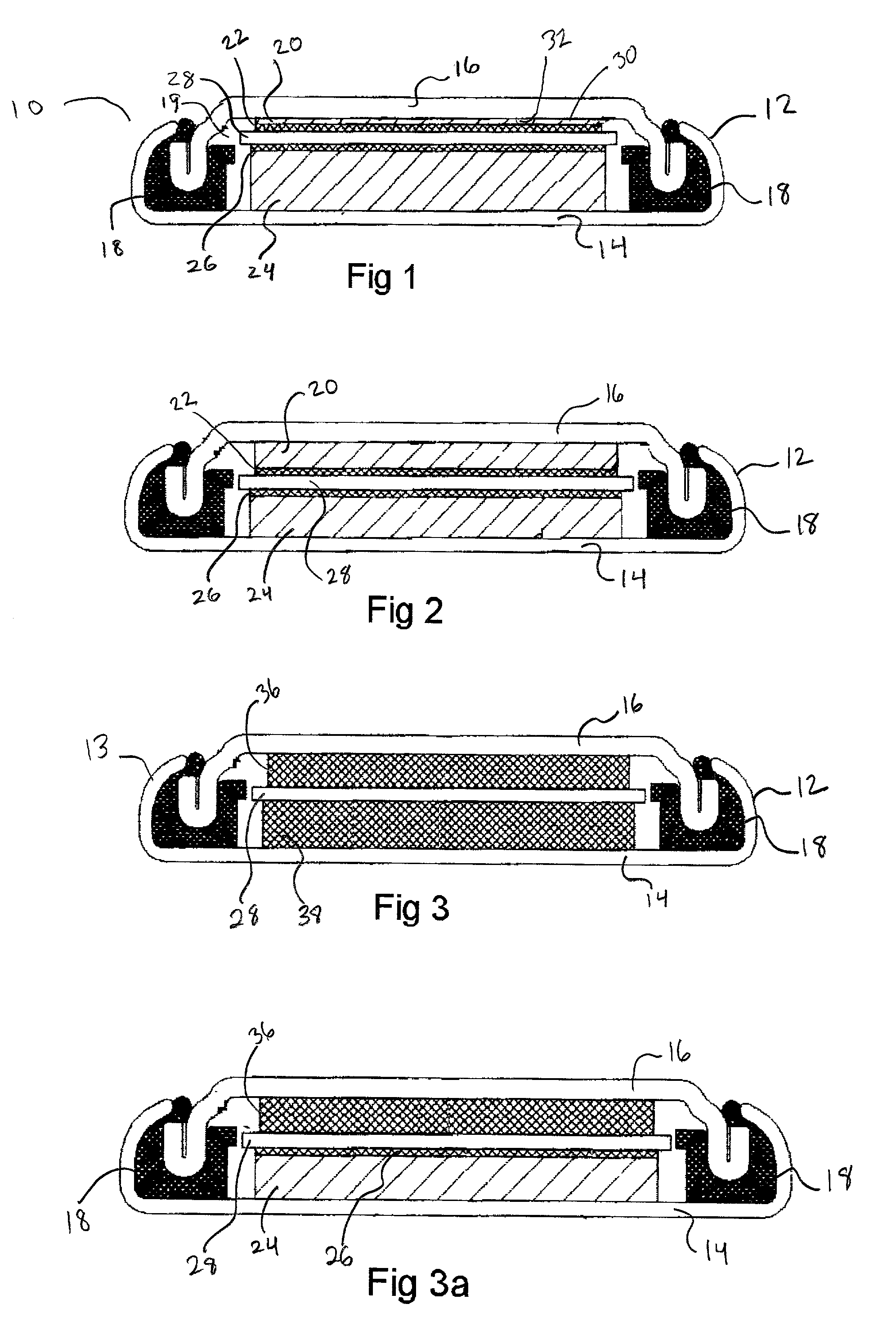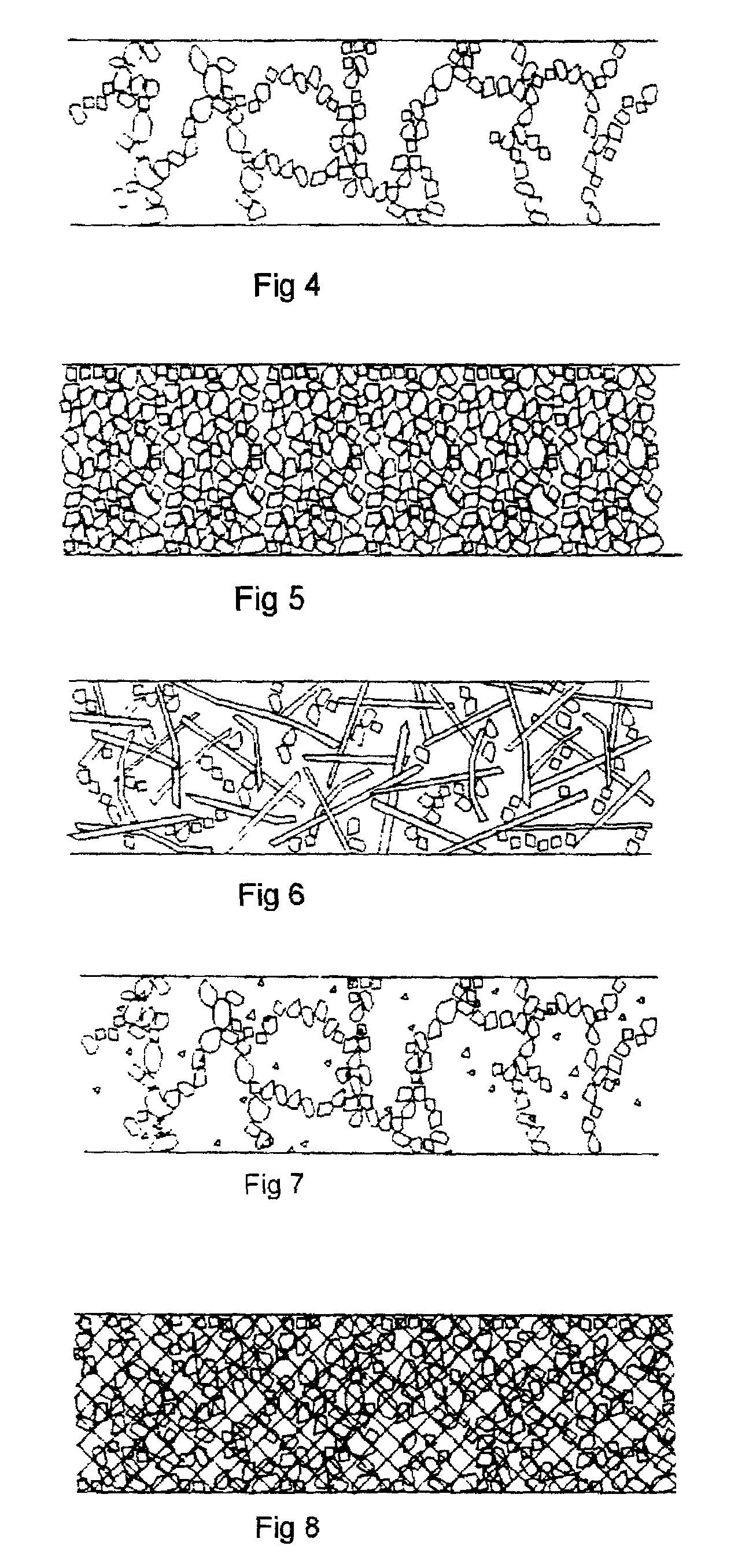Fire and corrosion resistant thermally stable electrodes and batteries and method for manufacturing same
a thermal stable, electrode technology, applied in the direction of cell components, sustainable manufacturing/processing, flat cell grouping, etc., can solve the problems of degrading the communication of electrical current from the adjacent active material of the electrode, shards posing a constant danger of damage to the separator, aluminum and copper are especially susceptible to corrosion, etc., to achieve a wide range of corrosion potential, minimize corrosion, and maximize conductivity
- Summary
- Abstract
- Description
- Claims
- Application Information
AI Technical Summary
Benefits of technology
Problems solved by technology
Method used
Image
Examples
Embodiment Construction
[0039]Referring now to FIG. 1 depicting a side cut away view of a preferred embodiment of the disclosed device 10, the device 10 as assembled forms an electrochemical component or battery and features an assembled cell can 12 formed of a cell casing 14 in sealed engagement with cell cap 16. The sealed engagement of the cell casing 14 with a cell cap 16 is provided through the use of a means for sealed engagement of the cell cap 16 to the cell can 12 which in this case is provided by gasket 18 compressed between the wall of the cell casing 14 and the cell cap 16 and concurrently providing an insulating means between both.
[0040]Inside the internal cavity defined by the interior dimensions of the cell can 12 is a first current collector 20 adjacent to an attached first electrode 22 thereby forming a unitary structure of current collector 20 and electrode 22. Also, in the interior cavity 19 is a second current collector 24 adjacent to an attached second electrode 26 also forming a unita...
PUM
| Property | Measurement | Unit |
|---|---|---|
| temperatures | aaaaa | aaaaa |
| conductive | aaaaa | aaaaa |
| fire retardant | aaaaa | aaaaa |
Abstract
Description
Claims
Application Information
 Login to View More
Login to View More - R&D
- Intellectual Property
- Life Sciences
- Materials
- Tech Scout
- Unparalleled Data Quality
- Higher Quality Content
- 60% Fewer Hallucinations
Browse by: Latest US Patents, China's latest patents, Technical Efficacy Thesaurus, Application Domain, Technology Topic, Popular Technical Reports.
© 2025 PatSnap. All rights reserved.Legal|Privacy policy|Modern Slavery Act Transparency Statement|Sitemap|About US| Contact US: help@patsnap.com



